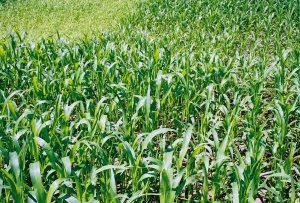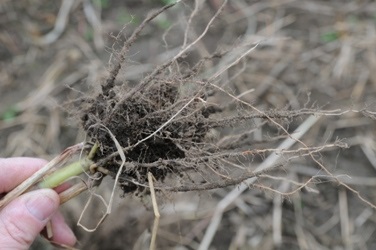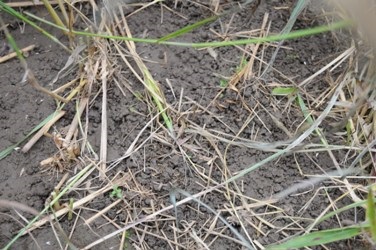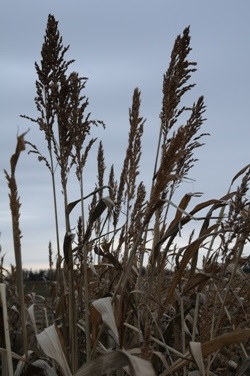Sorghum Sudan
Information on the benefits and growth habits of sorghum sudan planted as a cover crop.
Description
Family
- Grass — summer annual.
- Refers to a wide range of grasses related to sorghum and sudangrass.
- Usually a cross between a forage or grain sorghum and sudangrass.
Cover crop use
- after early harvested crops
- as an emergency forage
- to add biomass to soil
- suppress nematodes (variety specific)
Growth habits
Germination
- Requires warm soil for germination — above 12°C.
Top growth
- Rapidly growing summer annual grass.
- Wide cultivar variation — height ranges between 45 cm to over 5 m.
- Has lower leaf area than corn.
Root system
- Has more secondary roots than corn.
- Roots can reach depth of greater than 124 cm.
Overwintering
- Easily killed by frost.
Site suitability
- Extreme drought tolerance.
- Prefers neutral pH but can tolerate 5.0 to 9.0.
- Tolerant of salinity.
Sensitivity to herbicides: Weed control
- There are no herbicides registered for weed control in sorghum sudan grasses. Use narrow rows and appropriate agronomic practices to establish a vigorous crop canopy as soon as possible.
Benefits and concerns
Nutrient management
- Heavy feeder due to crop biomass.
- May need additional nitrogen to aid in decomposition.
Pest management
- Nematode suppression — selected varieties only.
- Weed suppression from competition for light, water and nutrients.
Organic matter
- Can produce massive amounts of dry matter (4,000 to 5,000 lbs/acre).
- Chop plant down when it reaches 1–1.2 m to encourage tillering and deeper root growth.
- Manage the crop with chopping to avoid maturity as stalks gets fibrous and woody with age and slow to break down.
Erosion control
- Reasonable, soil conservation alternative to summer fallowing.
As feed
- Can be used as forage.
- Wait until mature to avoid problems with prussic acid.
- Do not feed if plants have been stressed or frozen.
Getting started
Establishment
- Plant in warm soils — no sooner than 2 weeks following corn.
Cost and availability
- There is a wide variation in cultivars available and some confusion with sorghum.
- Cost is moderate depending on the variety.
- Some varieties have nematode suppressing properties.
- Buyer Beware: Make you sure know what you're buying when getting seed.
Managing the cover crops
- chop of mow plant when it reaches 1–1.2 m to encourage tillering and deeper root growth.
- manage the crop with chopping to avoid maturity as stalks get fibrous and woody with age and slow to break down.
- will set seed if not mowed.
Updated: January 14, 2025
Published: August 24, 2022



